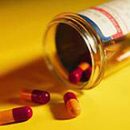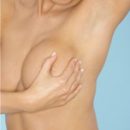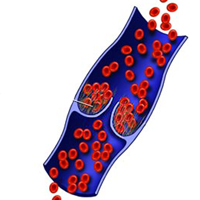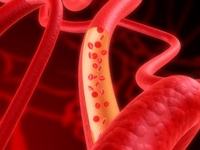What is nonspecific aortoarterite and how it manifests itself? What is the arterit of Horton and what is his symptoms? What is a nodule polyarteritic and what is his manifestations? Answers you will find in this article.
Content
Vasculitis - serious illnesses, in many cases representing a real threat to health and life. At the same time, the forecast can differ significantly depending on the specific diagnosis, stage and variant of the disease. The degree of danger of systemic vasculitis is best to speak with each patient separately, since the illness of the disease, preceding treatment, gender, age, other (so-called «Combined») Diseases, some individual features of the body (for example, the intolerance of some medicines) and other factors. But still try to briefly characterize the main problems that may occur with various forms of primary systemic vasculites.
What is nonspecific aortoarterite (or arteritis of such
This disease is associated with the defeat of the aorta (central blood vessel, separating from the heart) and its large branches. In the affected areas there are narrowings of the internal lumen of the vessel (stenosis), alternating with local extensions (aneurysms). The consequence of these changes is the insufficiency of blood supply to some organs or body regions. Mostly young women and teenage girls are sick, although sometimes the disease can occur in men (also young).
The beginning of the disease is often difficult to establish, since the first changes are hidden, asymptomatic, or nonspecific (characteristic of many diseases) symptoms arise: general weakness, joint pain, an increase in body temperature (usually insignificant - 37.0-37.5 °WITH; Less than 38.0 °C and higher). In the future (sometimes after a few months or even a few years), pain appear in the projection of the affected large arteries (for example, pain in the neck of the neck in the places of sleepy arteries) and / or pain associated with the insufficient blood flow in the upper or lower limbs, the head, Abdominal cavity. Typically reduce strength in the right or left hand, less often in the right or left leg (or in both upper or lower limbs); It becomes difficult to wear a bag in your hand, it's hard to hold onto a high handrail in transport, get items with a high shelf and other. It is often noted an asymmetric weakening or disappearance of the pulse on the right or left wrist, it is not possible to measure blood pressure on the hand where the pulse is weakened or there is a tonometer casing, a pain and feeling of numbness in hand).
When damaged arteries of the lower extremities, pain is usually the nature of the so-called «Intermittent chromoth»: With quick walking, there is pain in the calf muscles, less often the muscles of the hip, which forces to stop, after which it gradually disappears - and appears again when resumed motion.
Sometimes pain arise in the stomach (especially typically their occurrence or strengthening shortly after receiving food, although this is not always observed). Cutting, compressive pain in the heart and sternum, sometimes giving up to the left blade, lower jaw, left hand, can appear when walking, lifting up the mountain, inhalation of cold air into windy weather; Such pains, as a rule, indicate the defeat of the vessels, blood supplying heart. It is often raised by blood pressure, sometimes up to very high numbers; This is usually associated with the defeat of the kidney arteries.
Complications representing the greatest threat:
- acute violation of cerebral circulation (stroke);
- myocardial infarction;
- Acute catastrophe in the abdominal cavity (a large vessel thrombosis, a blood supply to the gastric or a sector of the intestine);
- Progressive kidney defeat with the development of chronic renal failure.
What is Horton Arteritis (Giant Calloral, Tempolic, Shenyl Arteritis)
As with non-specific aortarity, large arteries are affected; The disease also occurs more often in women. However, unlike nonspecific aortoatheritis, gigantaeer arthritis is always developing in persons over 50 years; The peak of morbidity is celebrated by the age of 70.
Clinical manifestations can resemble nonspecific aortoarterite, but more often the giantheal arteritis has a more local (local, limited) character than non-specific aortarkets; The most typical advantageous defeat of the branches of the outer carotid artery, especially the temporal artery. There is a surface sickness of the skin of the temple (on the one hand or on both sides), often spreading also in the area of the pattern, the nape, less often - forehead. Moderate focus of soft tissues in these areas can be seen, often under the skin in the temporal area, a dense painful sealer with a diameter of 3-5 mm is tested - inflamed and thickened temporal artery. The pain may also occur in the area of the eye (sometimes with a small ethnicity of the eyelids), in the upper and lower jaw, in the tongue, in the teeth, in the neck. The appearance of pain when firing food, which sometimes forces patients to abandon some products requiring careful chewing, and switch to nutrition of liquid food.
Severe consequences of the disease can be a loss of vision; As a rule, initially blindness is one-sided (only one eye is affected by) and maybe transient - after a few minutes, vision can recover. However, independent recovery of vision may not happen, and, suddenly coming, blindness may be irreversible. Such a state requires immediate, during the first hours after development, and intensive treatment; On the effectiveness of treatment, it is possible to calculate only if it has begun during the day from the moment of visual impairment. But even if it was not possible to restore the lost vision, the treatment still needs to be carried out to avoid other complications of the disease:
- acute violation of cerebral circulation (stroke);
- myocardial infarction;
- lesions of the gastrointestinal tract.
What is a nodule polyarteritic
Very serious illness, somewhat often developing in men, with a peak of morbidity between the ages of 20 and 40.
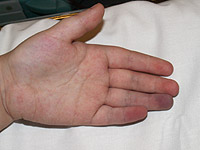 In most cases, the cause of the disease becomes infected with the hepatitis virus as a result of blood transfusion, collective intravenous drug administration using a common needle and / or a syringe, applying tattoos or conducting skin punctures (piercing) poorly sterilized tools, as well as as a result of sexual contacts with partners infected This virus.
In most cases, the cause of the disease becomes infected with the hepatitis virus as a result of blood transfusion, collective intravenous drug administration using a common needle and / or a syringe, applying tattoos or conducting skin punctures (piercing) poorly sterilized tools, as well as as a result of sexual contacts with partners infected This virus.
In the nodule polyarteritis, there is an inflammatory lesion of the arteries of medium and small caliber to form a set of small aneurysms (local extensions) and stenosis (essences) of vessels in the internal organs, in the muscles, in the skin. The initial signs of the disease are usually fever (from 37 °From to 40 °C and higher), severe pain in the muscles (especially icy), pain in the joints, rash in the form of focal hemorrhages and subcutaneous nodules (most often on the legs), loss of appetite and rapid weight loss. Loss of body weight in nodule polyarteritis occurs extremely rapid rates and is able to be up to 20-30 kg 2-3 months after the onset of the disease; As a result, extreme exhaustion of the patient may occur.
Very frequent manifestation of nodule polyarteritis - the so-called multiple neuritis: the defeat of individual trunks of the peripheral nerves of hands and / or legs. The first signs of neuritis may be a sense of numbness or other unpleasant feelings («Tingling by needles», «Running geasses») in separate fingers right or left hand or legs; defeat, as a rule, is asymmetrical. The feeling of numbness in the future come burning pulling pain in the affected areas of extremities, sometimes extremely strong and requiring frequent use of painkillers, as well as violations of the motor function of hands and / or feet.
Due to the damage to the nerve trunks, patients may lose their ability to move independently; It is possible to partial or complete loss of self-service ability (it is not possible to fasten and unbutton the buttons on the items of clothing, it is possible to dress yourself and undress, keep cutlery and T.NS.). In the future, the function of affected nerves is gradually restored, but this process can be stretched for many months or even years; Sometimes restoration is incomplete, and residual changes (changes in the type of so-called «Konsky foot» With the stopping of the foot when flexing the legs in the knee) can be saved for many years.
Another serious manifestation of the novel polymeride in the early stages of the disease are pain in the abdomen and / or lower back, due to impaired blood flow in the vessels of the abdominal cavity and kidneys, respectively. Such pains are a formidable symptom, since it is quite real for the possibility of developing acute surgical complications associated with impaired the integrity of the wall of the stomach and / or individual sections of the intestine and the life-threatening life of the patient. Men also have pain in the testicles caused by impaired blood flow in them and inflammatory response.
At the later stages of the disease to the forehead in the clinical picture, signs of kidney damage are emerging, the main of which is usually heavy arterial hypertension (an increase in blood pressure), capable of becoming a sharp impaired brain circulation, eyemination on the eye-free, with possible blindness, pulmonary edema. The outcome of such heavy damage to the kidneys often becomes chronic renal failure, requiring permanent hemodialysis (treatment with the help of the device «Artificial kidney») or transplanting donor kidney.
It is also possible to defeat the heart with the development of myocardial infarction, impaired heart rhythm, heart failure (shortness of breath, increasing in the lying position; feeling of gravity in the right hypochondrium, swelling of the legs).
Not all patients with nodular polycharity disease has such a difficult course; The forecast of the disease largely depends on how early the diagnosis has been made and special treatment has begun

